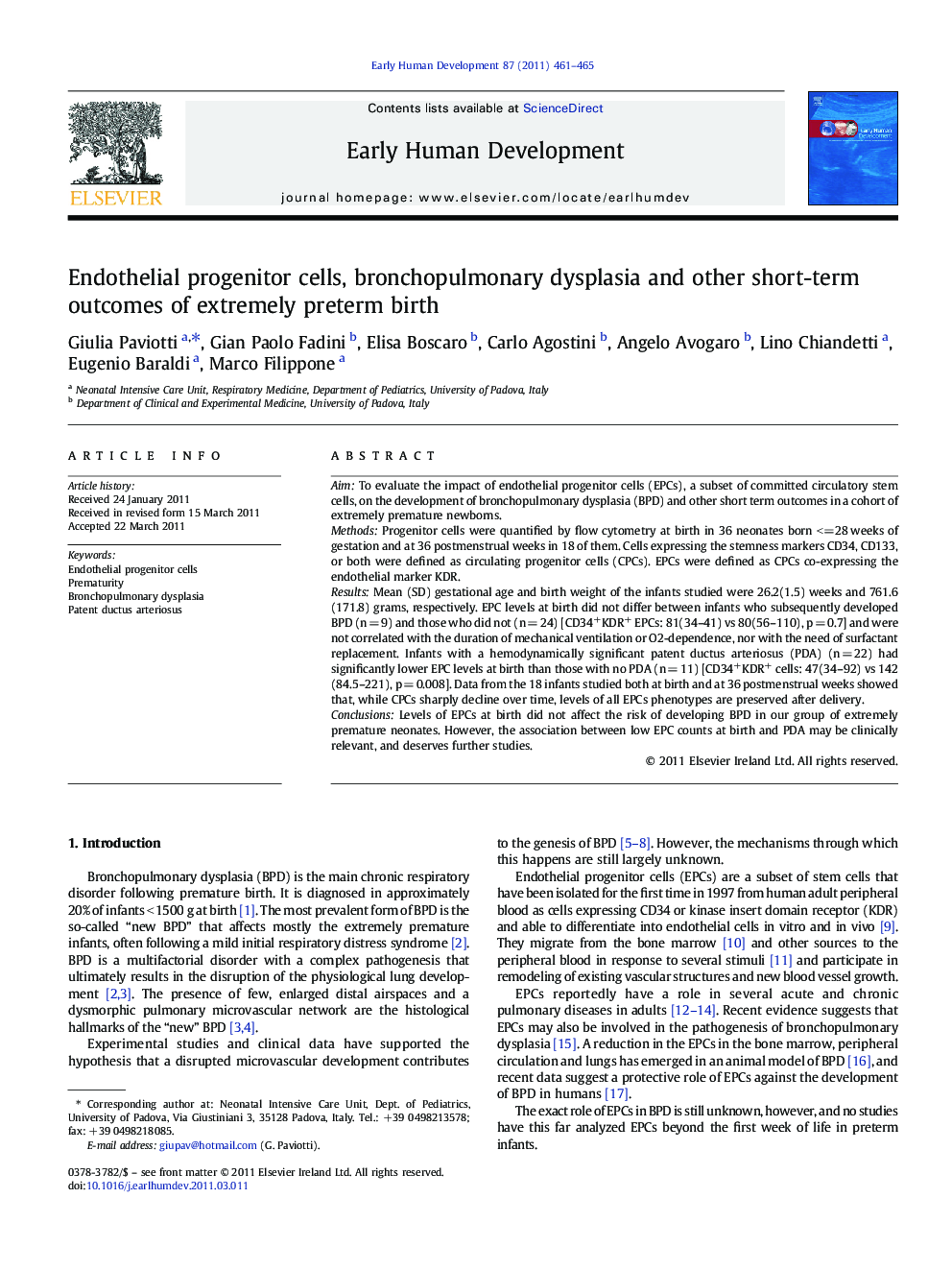| Article ID | Journal | Published Year | Pages | File Type |
|---|---|---|---|---|
| 3917438 | Early Human Development | 2011 | 5 Pages |
AimTo evaluate the impact of endothelial progenitor cells (EPCs), a subset of committed circulatory stem cells, on the development of bronchopulmonary dysplasia (BPD) and other short term outcomes in a cohort of extremely premature newborns.MethodsProgenitor cells were quantified by flow cytometry at birth in 36 neonates born <=28 weeks of gestation and at 36 postmenstrual weeks in 18 of them. Cells expressing the stemness markers CD34, CD133, or both were defined as circulating progenitor cells (CPCs). EPCs were defined as CPCs co-expressing the endothelial marker KDR.ResultsMean (SD) gestational age and birth weight of the infants studied were 26.2(1.5) weeks and 761.6(171.8) grams, respectively. EPC levels at birth did not differ between infants who subsequently developed BPD (n = 9) and those who did not (n = 24) [CD34+KDR+ EPCs: 81(34–41) vs 80(56–110), p = 0.7] and were not correlated with the duration of mechanical ventilation or O2-dependence, nor with the need of surfactant replacement. Infants with a hemodynamically significant patent ductus arteriosus (PDA) (n = 22) had significantly lower EPC levels at birth than those with no PDA (n = 11) [CD34+KDR+ cells: 47(34–92) vs 142(84.5–221), p = 0.008]. Data from the 18 infants studied both at birth and at 36 postmenstrual weeks showed that, while CPCs sharply decline over time, levels of all EPCs phenotypes are preserved after delivery.ConclusionsLevels of EPCs at birth did not affect the risk of developing BPD in our group of extremely premature neonates. However, the association between low EPC counts at birth and PDA may be clinically relevant, and deserves further studies.
